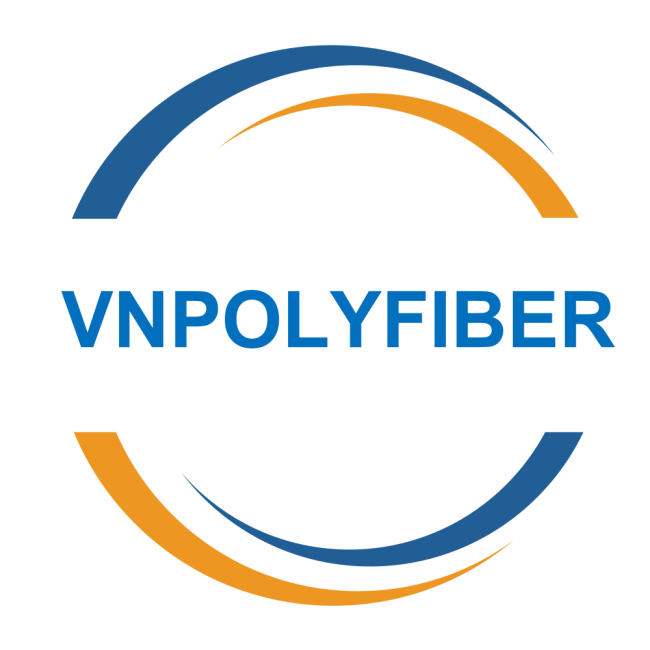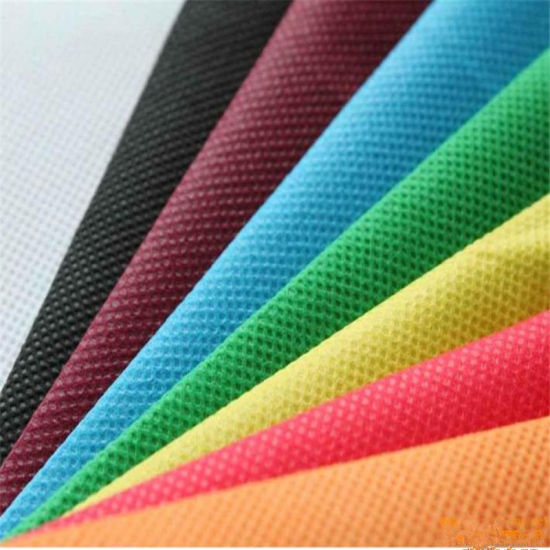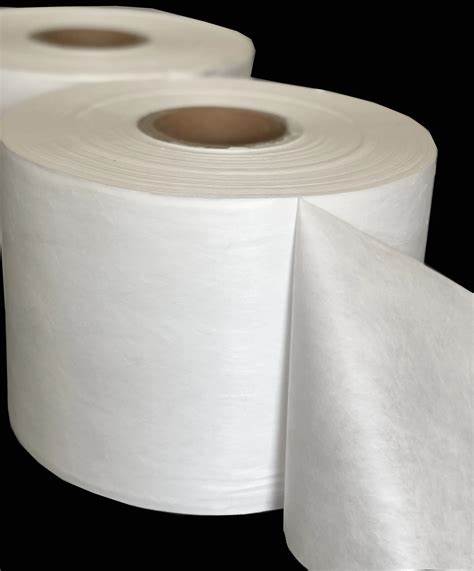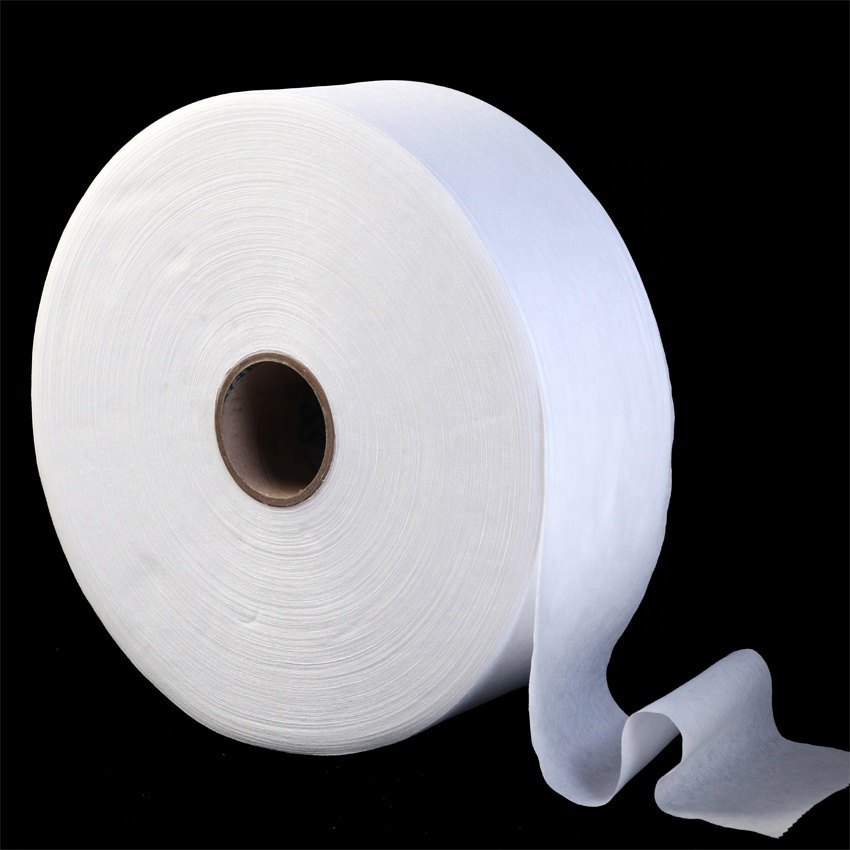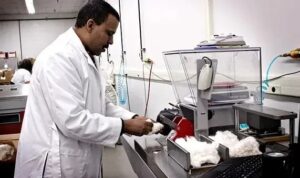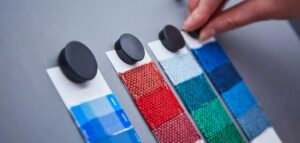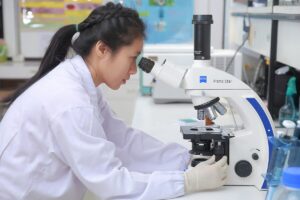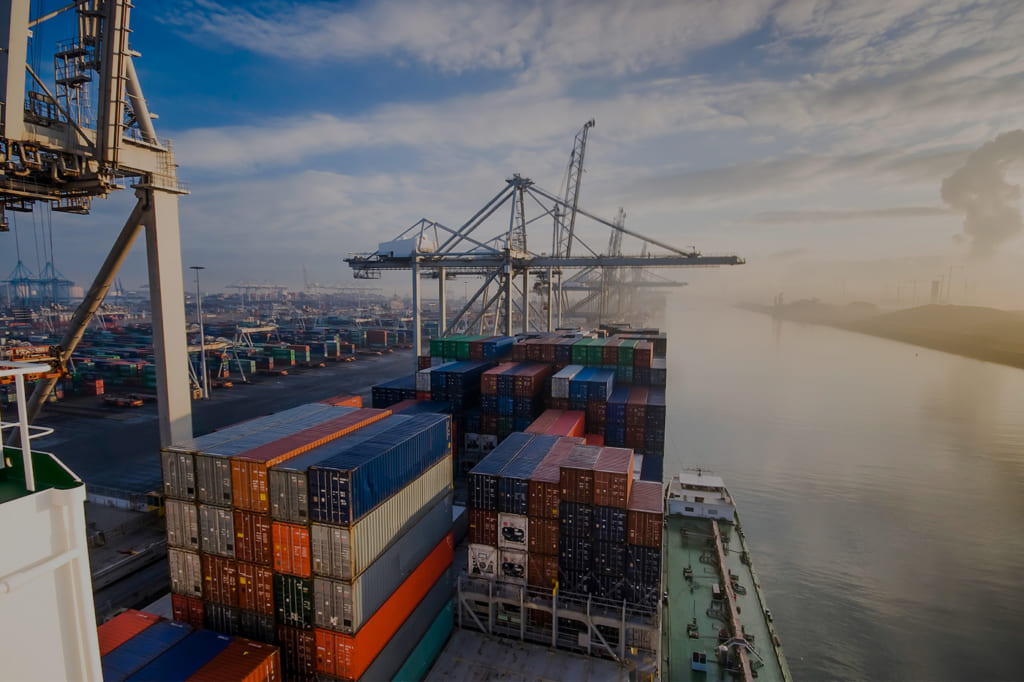What is Spunbond nonwoven?
Spunbond nonwoven is a type of fabric produced using the spunbond process, which involves the direct extrusion of polymer filaments to form a nonwoven fabric. This method is widely used because it allows for efficient and economical production of durable and versatile nonwoven materials. Here’s a detailed look at spunbond nonwovens:
Production Process
- Polymer Selection: The process typically begins with the selection of a polymer, such as polypropylene, polyester, or polyethylene. Polypropylene is the most commonly used polymer due to its favorable properties and cost-effectiveness.
- Extrusion: The polymer is melted and extruded through a spinneret, which contains numerous small holes. This produces continuous filaments of molten polymer.
- Filament Drawing: The extruded filaments are rapidly cooled and stretched to align the polymer molecules, which increases the strength of the filaments. This drawing process can be controlled to achieve the desired filament diameter.
- Web Formation: The continuous filaments are laid down onto a moving conveyor belt in a random or semi-random pattern, forming a web. This web can be formed through different techniques such as cross-lapping or direct laying.
- Bonding: The filament web is then bonded to create a cohesive fabric. In the spunbond process, bonding is usually achieved through thermal means. The web passes through heated rollers or is exposed to hot air, which melts the outer layer of the filaments, causing them to bond at their contact points.
Characteristics of Spunbond Nonwovens
- Strength: The drawing process during filament formation imparts high tensile strength to spunbond nonwovens, making them durable.
- Uniformity: The continuous filament process ensures a uniform fabric with consistent properties.
- Lightweight: Despite their strength, spunbond fabrics are typically lightweight, which is advantageous for many applications.
- Permeability: They can be engineered to have various levels of air and liquid permeability, making them suitable for filtration and hygiene products.
- Cost-Effective: The direct conversion of polymer to fabric in a single continuous process reduces production costs.
Applications
- Hygiene Products: Used in the production of disposable diapers, sanitary napkins, and adult incontinence products due to their softness, strength, and absorbency.
- Medical Textiles: Employed in surgical gowns, masks, drapes, and covers where sterility, strength, and disposability are important.
- Agriculture: Used for crop covers, weed barriers, and plant protection due to their durability and permeability.
- Geotextiles: Applied in soil stabilization, erosion control, and drainage projects in construction and landscaping.
- Packaging: Used in bags, gift wraps, and other packaging materials for their strength and flexibility.
- Furniture and Upholstery: Used as backing materials and linings due to their durability and cost-effectiveness.
- Industrial Applications: Employed in filtration systems, insulation materials, and protective apparel.
Advantages of Spunbond Nonwovens
- High Strength-to-Weight Ratio: Provides durability without adding significant weight.
- Uniform Properties: Ensures consistent performance across the fabric.
- Customizability: The process allows for adjustments in fiber diameter, bonding strength, and fabric thickness to meet specific needs.
- Cost Efficiency: The continuous production process minimizes costs and makes spunbond nonwovens economically viable for large-scale applications.
Disadvantages of Spunbond Nonwovens
- Limited Stretchability: Spunbond fabrics generally have limited elasticity, which can restrict their use in applications requiring high flexibility.
- Environmental Concerns: As many spunbond nonwovens are made from synthetic polymers, they may not be biodegradable, raising environmental sustainability issues. However, efforts are being made to develop biodegradable spunbond materials.
Key Considerations
- Polymer Choice: The type of polymer used will affect the properties of the final fabric, such as strength, elasticity, and thermal resistance.
- Bonding Method: The method and conditions of bonding (temperature, pressure) need to be carefully controlled to achieve the desired fabric characteristics.
- End-Use Requirements: The intended application will determine the specific requirements for properties such as strength, permeability, and durability.
What is Meltblown nonwoven?
Meltblown nonwoven is a type of nonwoven fabric produced using the meltblown process, which involves extruding melted polymer through tiny nozzles and blowing it with high-speed hot air to form fine fibers. This method is notable for producing fabrics with extremely fine fibers, leading to unique properties suitable for specific applications. Here’s a detailed look at meltblown nonwovens:
Production Process
- Polymer Selection: Common polymers used in meltblown nonwovens include polypropylene, polyester, and polyurethane. Polypropylene is the most widely used due to its melt processability and cost-effectiveness.
- Extrusion: The polymer is melted and extruded through a die with numerous small orifices, creating fine filaments.
- Air Blowing: High-velocity hot air is directed at the extruded filaments as they exit the die. This air stream stretches and attenuates the fibers, making them very fine (usually in the range of 1-5 microns in diameter).
- Web Formation: The fine fibers are collected on a moving conveyor belt or drum, forming a web. The randomness and fineness of the fibers create a fabric with unique properties.
- Bonding: The fibers are bonded together primarily by self-adhesion due to their thermal properties as they cool. In some cases, additional bonding methods such as calendering or applying a binder may be used to enhance fabric integrity.
Characteristics of Meltblown Nonwovens
- Fine Fiber Diameter: Meltblown fibers are significantly finer than those produced by other nonwoven processes, leading to high surface area and porosity.
- Filtration Efficiency: The fine fibers and high surface area make meltblown nonwovens exceptionally effective for filtration applications.
- Softness: The fine fibers result in a soft texture, suitable for applications in hygiene and medical products.
- Barrier Properties: Meltblown fabrics can provide excellent barriers against liquids, particulates, and microbes.
- Electrostatic Charge: Meltblown fabrics can be electrostatically charged to enhance filtration efficiency, particularly for capturing fine particles.
Applications
- Filtration:
- Face Masks and Respirators: The core material in N95 masks and other high-efficiency filters due to its ability to capture fine particles.
- Air Filters: Used in HVAC systems, vacuum cleaners, and industrial filtration systems.
- Liquid Filters: Applied in water purification and medical filtration systems.
- Medical Textiles:
- Surgical Drapes and Gowns: Provides barriers against fluids and pathogens.
- Sterilization Wraps: Used to wrap medical instruments for sterilization.
- Hygiene Products:
- Diapers and Sanitary Napkins: Used in the absorbent core for its liquid retention and distribution properties.
- Wipes: Both dry and wet wipes benefit from the fine texture and absorption capabilities.
- Insulation:
- Thermal and Acoustic Insulation: The fine fibers trap air, providing effective thermal insulation and sound absorption.
- Oil Absorbents:
- Spill Response Materials: Used to absorb oil and other hydrophobic liquids in spill containment and cleanup operations.
Advantages of Meltblown Nonwovens
- High Filtration Efficiency: The fine fibers and high surface area make these fabrics excellent for capturing small particles.
- Softness and Comfort: Suitable for direct skin contact applications like masks and hygiene products.
- Versatility: Can be tailored for various applications through adjustments in fiber diameter, basis weight, and web formation techniques.
- Barrier Properties: Effective at blocking liquids and particulates.
Disadvantages of Meltblown Nonwovens
- Mechanical Strength: Meltblown fabrics typically have lower tensile strength compared to other nonwovens like spunbond fabrics.
- Cost: The production process and fine fiber nature can make meltblown nonwovens more expensive than other types of nonwoven fabrics.
- Environmental Impact: Like other synthetic nonwovens, they may raise environmental concerns if not properly disposed of, though biodegradable polymers are being explored.
Key Considerations
- Polymer Quality: The type and quality of polymer used can significantly affect the properties of the final fabric.
- Process Control: Precise control over extrusion and air blowing conditions is crucial to achieving the desired fiber fineness and web structure.
- End-Use Requirements: Specific application requirements, such as filtration efficiency or barrier properties, will dictate the design and production parameters.
Meltblown nonwovens are critical in applications where fine filtration and high barrier properties are required. Their unique characteristics make them indispensable in medical, hygiene, and industrial sectors, particularly for filtration and protective applications.
What is Spunlace Nonwovens?
Spunbond nonwovens are a versatile and essential material in many industries, known for their strength, uniformity, and cost-effectiveness. Their wide range of applications and ability to be tailored to specific needs make them a valuable choice for various products and industrial uses.
Spunlace nonwoven, also known as hydroentangled nonwoven, is a type of fabric made by entangling fibers using high-pressure water jets. This process creates a strong, flexible, and highly absorbent fabric without the need for binders or adhesives. Here’s an in-depth look at spunlace nonwoven fabrics:
Production Process
- Fiber Selection:
- Types of Fibers: Natural fibers (like cotton, wood pulp), synthetic fibers (like polyester, polypropylene), or blends of fibers are used.
- Blending: Blending different fibers can optimize properties such as softness, strength, and absorbency.
- Web Formation:
- Carding: Fibers are opened, aligned, and layered into a web using carding machines.
- Air Laying: Fibers are dispersed in an air stream and deposited onto a moving conveyor belt to form a web.
- Hydroentanglement:
- Water Jets: The web is subjected to high-pressure water jets on a perforated conveyor belt. The water jets penetrate the web, entangling the fibers and forming a coherent fabric.
- Energy Control: The pressure and speed of the water jets, along with the fiber type and web thickness, determine the properties of the final fabric.
- Drying and Finishing:
- Drying: The hydroentangled web is dried to remove moisture.
- Finishing: Additional processes such as calendering, embossing, or chemical treatment may be applied to enhance the fabric’s properties.
Characteristics of Spunlace Nonwovens
- Softness: The hydroentanglement process produces a soft fabric suitable for applications requiring skin contact.
- High Absorbency: The fabric’s structure allows for excellent liquid absorption and retention.
- Strength and Durability: The entangled fibers provide good tensile strength and durability without the need for chemical binders.
- Flexibility: The fabric is flexible and drapable, making it suitable for various applications.
- Lint-Free: The process can create a lint-free fabric, which is important for specific uses like wipes and medical products.
Applications
- Hygiene Products:
- Baby Wipes: Soft and absorbent, suitable for sensitive skin.
- Cosmetic Pads: Used for makeup removal and skincare routines.
- Medical Products:
- Surgical Gowns and Drapes: Provides barrier properties and comfort.
- Wound Care: Used in bandages and dressing pads for their absorbency and softness.
- Household and Industrial Wipes:
- Cleaning Wipes: Effective for cleaning surfaces due to their absorbency and strength.
- Disinfectant Wipes: Used for sanitizing surfaces in homes and workplaces.
- Automotive and Industrial Applications:
- Polishing Cloths: Used for polishing and cleaning in automotive and industrial settings.
- Filtration: Employed in air and liquid filtration systems.
- Garments and Textiles:
- Interlinings: Used in garments for added structure and stability.
- Disposable Clothing: Suitable for applications where disposable, yet durable, clothing is needed.
Advantages of Spunlace Nonwovens
- No Binders Required: The mechanical bonding process eliminates the need for chemical binders, making the fabric pure and free of additional chemicals.
- Soft and Comfortable: Suitable for applications involving direct skin contact.
- Versatility: Can be engineered to meet various requirements by adjusting fiber types, web formation, and hydroentanglement parameters.
- High Absorbency: Ideal for products that require quick and efficient liquid absorption.
Disadvantages of Spunlace Nonwovens
- Production Costs: The hydroentanglement process can be energy-intensive and may have higher production costs compared to other nonwoven processes.
- Mechanical Strength: While strong, spunlace fabrics may not match the tensile strength of some other nonwoven fabrics like spunbond or needle-punched nonwovens.
Key Considerations
- Fiber Choice and Blending: The selection and blending of fibers are crucial to achieving desired properties such as softness, absorbency, and strength.
- Water Jet Parameters: The pressure, speed, and pattern of water jets need to be carefully controlled to ensure proper fiber entanglement and fabric properties.
- End-Use Requirements: The specific application will dictate the choice of fibers, web formation techniques, and finishing processes.
Spunlace nonwovens are versatile and widely used fabrics known for their softness, absorbency, and strength. They are integral in a variety of applications ranging from hygiene and medical products to industrial and consumer goods, offering a balance of performance and comfort.
